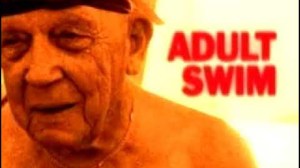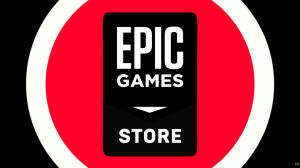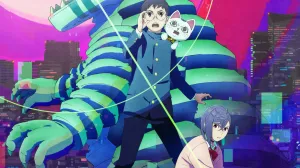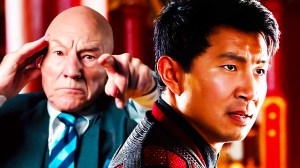
Empress #1, the newest Millarworld series, premieres this week at comic stores everywhere and on digital platforms like Comixology. It tells the story of Emporia the wife of a high-tech dictator in Earth’s ancient past who’s fleeing her husband in order to protect their children and escape the violence of his reign. We’ve had a chance to take a look at the first two issues and they are a splendid combination of a new, beautifully presented science fiction universe, stunning action sequences, and compelling family drama striking at universal themes. That’s no surprise coming from this creative team though.
Videos by ComicBook.com
Every person contributing to Empress is a modern comics all-star, and we had the opportunity to speak to each of them at ComicBook.Com. Follow along as we ask 10 questions to everyone who helped make this stunning new debut what it was, finding out how it came to be and what to expect next.
Stuart Immonen – Artist
1. Empress is a comic featuring a lot of detail and a broad scope. What was your role in developing this world and this story from the ground up?
Stuart Immonen: Mark came to me with the high concept, the back story and beats for the series and I came up with the visuals. This is a pretty typical method. The writer will ask for “alien army” and the penciller devises the look, sometimes based on specific story requirements, sometimes based on the description if provided, and sometimes based on the penciller’s own fancy. Mark was very open to visual input; I showed him my one best idea and unless there was a strong objection, we usually went with that.
2. In Empress everything had to be invented from scratch from the enormous spaceships to the clothes on each character’s back. Previously in comics like Star Wars and Nextwave, there was a rich history to pull cues from, but this is entirely it’s own thing. Where do you start when designing a strange, new world like this one?
Immonen:
I think the pertinent question is not where, but when, the answer to which is months and months in advance. There wasn’t a lot of going back and forth on designs and concepts, but there was so much material to cover that , even in the first issue, the workload was monumental. I’m on my third sketchbook dedicated solely to Empress.
Star Wars, obviously, has a unique look and feel, and while Jason and I inserted a few original concepts, those needed to run the Story Group gauntlet and be deemed “Star Wars-y.” Nextwave was completely different; yes, I drew Fin Fang Foom and the Celestials, but for the most part, it was entirely off-the-cuff. Dirk Anger, the Shockwave Rider, the H.A.T.E. Aeromarine, the ridiculous villains, all the costumes were created by Warren and me, which is simply a baseline requirement working in comics. Stuff needs inventing all the time.
3. There are also some surprisingly familiar elements that pop up in the first issue with ancient Earth being a key setting. What sort of research did you put into resurrecting dinosaurs and other artifacts of a history before humanity?
Immonen: Oh, not that much. It’s really mostly entirely out of my head. There was some discussion among the art team about depicting the Pangea supercontinent, but it just got in the way of storytelling, which was more important.
4. The central cast of characters are much more human than this largely alien world. How did you go about designing the members of this family to reflect their personalities and upbringing?
Immonen: Ideally, every character’s appearance should showcase their personality, human, alien or otherwise. It’s the process every costume designer stuggles with. But I think moreover, the clothes have to serve a practical purpose as military or ceremonial uniforms, offworld disguises, life support or what have you. They have to function.

5. When you began work on the first issue what was the element of the story that you found most compelling as you were telling it on the page?
Immonen: It may sound odd, but I think the most compelling element was the relentless pace; Mark’s script doesn’t take a breath, and it was critical that I stepped up my own game to match his level of enthusiasm and intensity.
6. You’re working with two other very talented artists, inker Wade von Grawbadger and colorist Ive Svorcina. What elements have you enjoyed seeing them bring out of your own work?
Immonen: When I choose to draw in a more open style, as I did on Empress, my tendency is to make it angular and exaggerated, but I was pleased to find that there was a freer, more organic quality that developed as we moved through the first issue, and has actually become a kind of touchstone for the look of the series. Another artist called it “baggy,” make of that what you will. Any new collaboration is a feeling-out process; you try things out, and pursue them when they work well, and avoid them if it’s a dead end.
7. Both of the first two issues of Empress feature some pretty spectacular action sequences. How do you and Mark collaborate on tweaking these largely wordless chases and fights to make sure they land just right on the page?
Immonen: Mark scripts them and I draw them. There’s no tweaking. I’ve worked with writers who find it sufficient to say,” all fight,” and also those who describe the direction of action and and camera angle and composition and the number of teeth that go flying. Mark is a Goldilocks writer who gives just enough to work with and then steps aside to let me do my part.
8. Every story brings new challenges and opportunities. Over your career you’ve adjusted to a wide variety of stories and evolved your own style and storytelling in response. Reflecting on Empress how do you think working on this series helped you advance as an artist?
Immonen: Oh, this is the kind of thing I won’t know for years, if ever. I’m certainly not thinking about advancing as an artist while I’m working on a project; I’m thinking about telling the story, making it fun and exciting and entertaining.
9. Looking ahead of Empress #1 what are the biggest challenges you encountered throughout the series that you think will continue to surprise readers?
Immonen: I don’t know, really. What’s challenging for me as an author may not translate at all on the page. Every day has struggles, to find the right panel composition, to discover the facial expression or body language that conveys an emotion. The reader won’t be thinking about those things; if we’ve hit the mark, they’ll be swept up in the story.
10. Before we wrap up would you mind sharing a favorite panel or sequence from Empress #1 with our readers and touch on what you enjoy about it?
Immonen: Ha! Well, I don’t enjoy much about my own work—it’s very rare that I find something of which I am not hyper-critical, but I’ll try.
Here’s EMPRESS #1, page 12, panel 1.

It’s a typical page turn surprise beat, with the action travelling counter to North American reading convention, that is, right-to-left, to emphasize the antagonistic flow to this moment in the story. Everyone is turned away except Emporia who twists toward the reader, and is obviously foremost in the picture plane—both these elements reflect her importance in the panel. The vectors of the laser bolt, the staggered figures, and the plume of smoke create an unsettled, agitated composition and the speed lines direct the gaze back to the point of impact while contrasting with the relatively formally spaced figures. It’s not a perfect panel, but it has all the elements which tell the story effectively, even without dialogue or description, which is always my primary goal.
Empress is available April 6, 2016 from physical and digital retailers of comics.
Stuart Immonen will be taking part in a one hour Ask Me Anything session on the Millarworld forums tomorrow at 2pm (EST) to mark the debut of Empress.
Check Out More Interviews From Empress Week Below:








